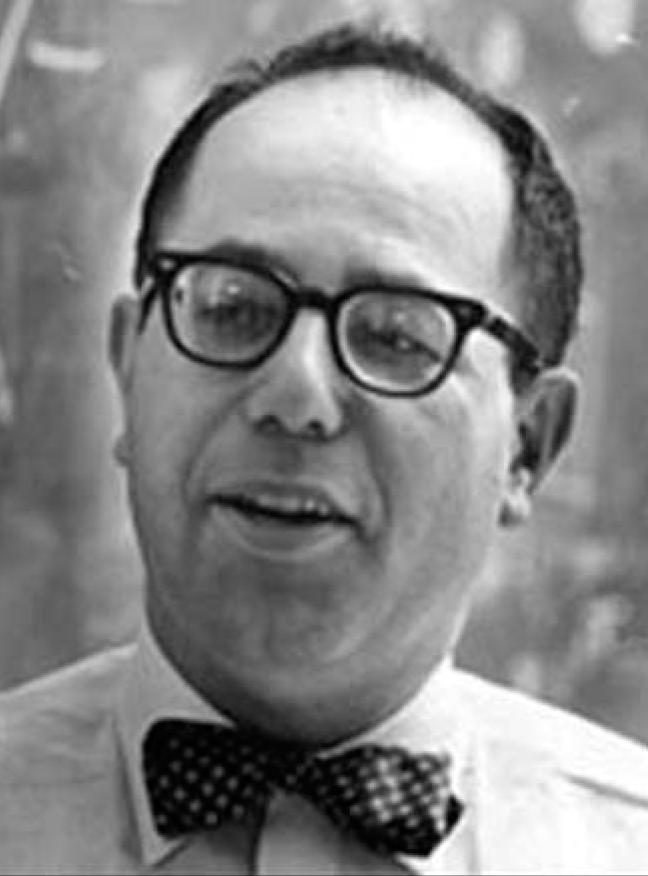Hershel Markovitz
DOI: 10.1063/1.2435657
Hershel Markovitz, emeritus professor of mechanics and polymer science in the department of chemistry at Carnegie Mellon University, died on 29 August 2006 in Jerusalem. He is known for his pioneering work on the linear viscoelasticity of polymer solutions, his later theoretical and experimental research on normal stress effects in such materials, and educational movies on polymer rheology, for which he was author and principal.
Born in McKeesport, Pennsylvania, on 11 October 1921, Hershel spent most of his life in Pittsburgh until he moved with his wife Marion to Jerusalem in 1987. He earned a BS in chemistry from the University of Pittsburgh in 1942 and a PhD in chemistry, with a dissertation on the viscosity of polyacrylic acid solutions, from Columbia University in New York in 1949. That same year he returned to Pittsburgh and joined the fellowship on synthetic rubber properties at the Mellon Institute of Industrial Research, where he began a long and extremely successful career researching the rheology of polymers and their solutions. Among his early collaborators at the institute were Louis Zapas and Frank Padden Jr.
Hershel’s early research helped him develop the strategies he pursued throughout his career: the construction of instruments for measuring dynamical mechanical properties and the development of the theory needed to properly interpret results obtained with those instruments. From 1954 to 1957, Hershel led the fellowship and began his seminal experimental and theoretical research on normal stress effects in what are known today as viscometric flows. It was also in this period that one of us (Casassa) joined the fellowship to research dilute polymer solutions.
The Mellon Institute was restructured into independent and sponsored research divisions in 1957: Paul Flory was brought in as the director of research, Thomas Fox was put in charge of polymer research, Casassa was promoted and one of us (Coleman) was recruited to join Hershel as senior fellow, and several new fellows, including two of us (Plazek and Berry), were appointed to the newly formed polymer group in the independent research division. Around this time, Hershel and Casassa published their work on the second virial coefficient of polymer solutions and Hershel published papers on normal stress effects, all of which strongly influenced Coleman and Walter Noll, then at the Carnegie Institute of Technology, who together developed a general theory of viscometric flows.
In the decade that followed, Hershel deepened his interest in normal stress effects while continuing his experimental research, in collaboration with Plazek, on linear viscoelasticity, with emphasis on the frequency and temperature dependence of dynamic properties. He was a visiting lecturer at the Johns Hopkins University in Baltimore, Maryland, in 1958–59 and a Fulbright fellow at the Weizmann Institute of Science in Rehovot, Israel, in 1964–65. His research with Coleman, initiated in 1963, revealed that when second-order fluids are considered to be slow-flow approximations to fluids with long-range but gradually fading memory, algebraic relations emerge between the intrinsically nonlinear normal stress effects and certain parameters in the linear theory of viscoelasticity, and those relations appear capable of experimental verification. Hershel also collaborated with Coleman and Noll on the book Viscometric Flows of Non-Newtonian Fluids, Theory and Experiment (Springer-Verlag, 1966).
In 1967 Hershel accepted a professorship, which offered him the opportunity to create courses in rheology for the graduate program in polymer science, from the newly created Carnegie Mellon University, a merger of Mellon Institute and the Carnegie Institute of Technology. He taught the courses until his retirement in 1986, and the university recognized his excellent teaching skills in 1982 by presenting him with the Julius Ashkin Teaching Award. Through his scholarship and vitality, he produced publications on the history of rheology, several encyclopedia articles, and films still in use that illustrate fascinating implications of the normal stresses that occur in viscometric flows. The research he conducted while at Carnegie Mellon included experimental studies of linear viscoelastic properties of polymer solutions, polymer dispersions, and semicrystalline polysilaxane and theoretical studies of implications of the theory of materials with fading memory.
Hershel was active in scientific affairs, serving as the chairman of the American Physical Society’s division of high polymer physics (1961–62) and president of the Society of Rheology (1969–71). He sat on the editorial boards and had editorial positions with the Transactions of the Society of Rheology (1967–69) and the Journal of Polymer Science (1966–88). In 1967 he was awarded the Bingham Medal from the Society of Rheology.
During his career Hershel published research papers with 26 different coauthors and worked informally with many more. All of us in the science community who interacted with Hershel felt great affection for him. His generosity with his time and knowledge was much appreciated by the many students he helped, and by those of us who had the wonderful opportunity to be his colleague and friend.

Hershel Markovitz
CLYDE HARE/AIP EMILIO SEGRÈ VISUAL ARCHIVES

More about the Authors
Guy C. Berry. Carnegie Mellon University, Pittsburgh, Pennsylvania, US.
Edward F. Casassa. Carnegie Mellon University, Pittsburgh, Pennsylvania, US.
Bernard D. Coleman. Rutgers University, New Brunswick, New Jersey, US.
Donald J. Plazek. University of Pittsburgh, Pittsburgh, Pennsylvania, US.
